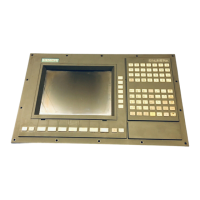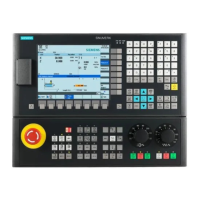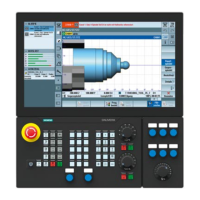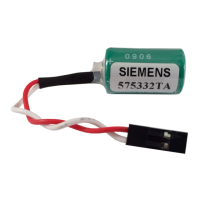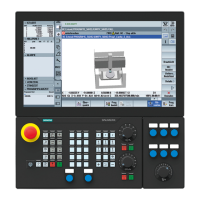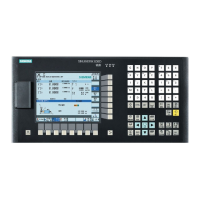Detailed Description
2.9 Mode group, channel, program operation, reset response (K1)
Basic logic functions: NC/PLC interface signals (Z1)
Function Manual, 11/2006, 6FC5397-0BP10-2BA0
101
DB21, ...
DBX37.7
Stop at block end is ignored during single block (SBL)
Edge evaluation: Signal(s) updated:
The following machine data and part program commands are used to specify that the stop at block
end during single block (DB21, ... DBX0.4 == 1) is to be ignored:
• MD10702 $MN_IGNORE_SINGLEBLOCK_MASK (Prevent single block stop)
• MD20117 $MC_IGNORE_SINGLEBLOCK_ASUP (Execute interrupt program completely in
spite of single block)
• MD20106 $MC_PROG_EVENT_IGN_SINGLEBLOCK (Prog events ignore single block)
• SBLOF (suppress single block), SBLON (cancel single block suppression)
Part program blocks for which stop at block end during single block is ignored are designated as
single block-inoperative.
Signal state 1 Single block is active (DB21, ... DBX0.4==1) AND part program block is single block-inoperative.
Signal state 0 Single block is not active (DB21, ... DBB0.4 == 0) OR
(single block is active (DB21, ... DBX0.4 == 1) AND part program block is single block-operative)
Corresponds to .... Read-in disable is ignored. DB21, ... DBX37.6 (read-in disable is ignored)
DB21, ...
DBB208 - DBB271
Active G function of groups 1 to 60
Edge evaluation: no Signal(s) updated: cyclic
Signal state <> 0 A G function or mnemonic identifier of the G group is active.
The active G function can be determined from the value (starting with 1):
1 = First G function of the G group
2 = Second G function of the G group
3 = Third G function of the G group
Please refer to a listing of the possible G-groups with the relevant functions in the Programming
Fundamentals Guide.
Signal state = 0 No G function or G group mnemonic identifier is active.
Application
example(s)
The active G group is stored in binary code in the relevant byte.
The following evaluation applies:
%LW
(YDOXDWLRQ
([DPSOH
*
Special cases,
errors, ......
In contrast to auxiliary functions, G functions are not output to the PLC subject to
acknowledgement, i.e., processing of the part program is continued immediately after the G
function output.
Additional references /PG/Programming Fundamentals Guide

